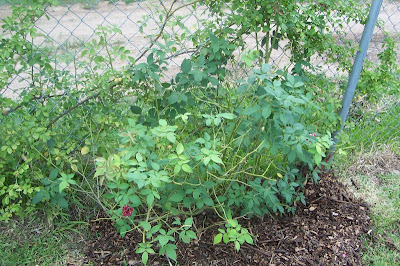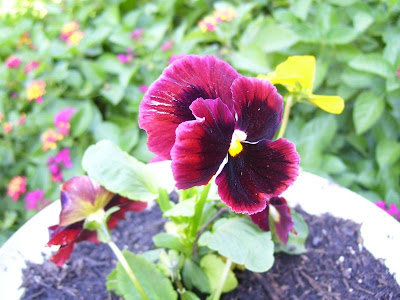This first photo is at peak April bloom. The blooms are slightly deeper pink in cooler weather. The fragrance is sweet and noticeable.
This is the same plant in mid-July. Notice that it hasn't gotten much taller. This is because I keep it cut back as I deadhead the blooms. I find that this makes for a fuller-looking bush on this and other bush roses. I like doing this to my hybrid teas and shrub roses. I don't do this to Old Garden Roses such as hybrid musks, Chinas, and teas. You can also notice the lack of diseased leaves on this rose.
This is a month later at a time when the plant is resting between flushes. In mid-August the plant is still looking robust, green, and quite pleasing in form. My Belinda's Dream was planted in October 2008, for those of you who want to know its age.
In mid-September, the plant is going into yet another flush of blooms. Notice that the blooms are not diminished in size at all by the blazing heat of our Louisiana September. The pink might be a little lighter in color from the hot sun.
This last picture is late October just before the full flush of bloom. You'll notice one limb that has broken and fallen to the ground. This was because of the weight of so many buds on that particular limb. Still no loss of leaves and almost non-existent blackspot.
For anyone in my corner of the world that wants a stellar performer that needs little care, this is one of my top recommendations. It has fragrance, perfect blooms, health, and pleasing bush form. I've given it the same care as all the rest of my roses - plenty of water during drought times, a cup or two of alfalfa pellets in the spring, heavy pruning in late winter, light pruning in the growing season to keep it bushy, and hardwood mulch around its feet. It gets no fungicide or insecticide. I'm guessing that it would do fine without any of the stuff I give it. A definite "must have" rose for Louisiana.














+10-31-10.jpg)















+10-26-10.jpg)
+10-27-10.jpg)
+10-27-10.jpg)




+10-10-10.jpg)













